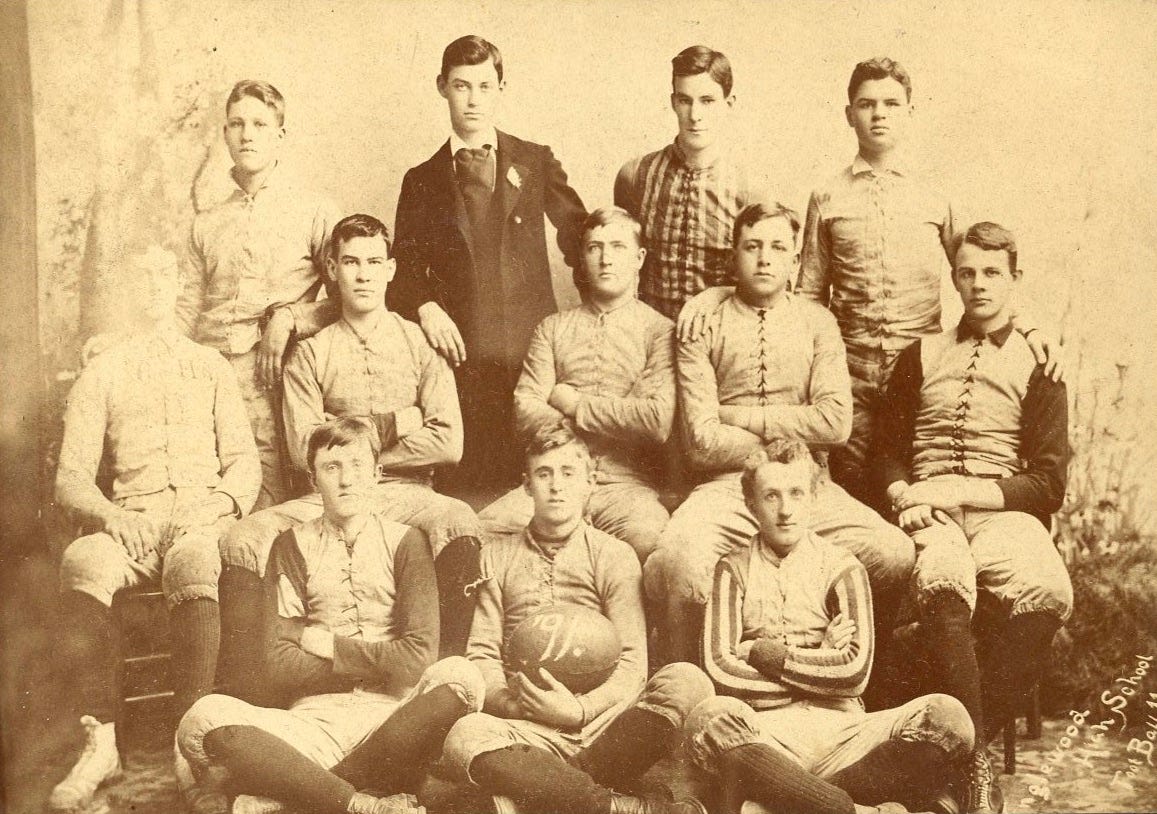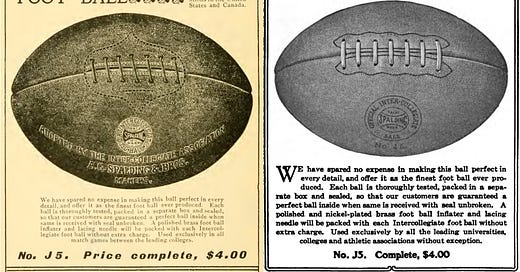Toward A Smaller Ball
Through the mid-1880s, the size of the ball used in games went unmentioned in the rule books and seldom appeared in the press. One 1876 newspaper reported the IFA agreed to use the No. 5 or 27-inch ball, while another in 1887 that outlined the game's rules mentioned the 30-inch ball While period images suggest teams used the 30-inch Big Side Match Ball, like the one Yale’s trophy case, there is little documentation to confirm the ball’s size.

The first specifications for the ball used in American rugby/football came in 1886 when the IFA passed a resolution specifying the use of the English Lillywhite Model J No. 5 model in all matches, notable because the No. 5 was a 27-inch ball. The Lillywhite ball finally received mention in the 1890 rule book in a footnote on the first page, though it does not mention the size:
Note: The ball used and adopted for the American Intercollegiate Association is the Lillywhite “J” Ball, and is made exclusively for A. G. Spalding & Bros., and to be genuine must bear their Trade Mark.
Spalding was the sole agent for Lillywhite balls in the U.S. and manufactured rubberized canvas footballs before they began producing a Spalding-branded leather ball, which the company claims was the first American-made leather rugby ball or football.
Keep reading with a 7-day free trial
Subscribe to Football Archaeology to keep reading this post and get 7 days of free access to the full post archives.



